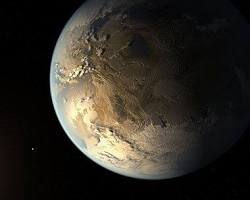How to Find Exoplanets ?
- David Håber
- 19 minutes ago
- 5 min read
Have you ever looked up at the night sky and wondered how many worlds might be orbiting the stars above us? That question has driven astronomers to search for planets beyond our solar system—exoplanets. These are planets that orbit other stars, but detecting them is far from simple. Stars are overwhelmingly brighter than their planets, making direct observation extremely difficult. Despite these challenges, scientists have identified thousands of exoplanets using a variety of clever detection methods. Understanding how these techniques work helps us learn not only where these distant worlds are, but also what they might be like. Let’s explore the main ways astronomers uncover these hidden planets.

1. Direct Imaging
As indicated by its name, Direct Imaging involves directly capturing images of exoplanets, achievable by seeking the light reflected by a planet's atmosphere at infrared wavelengths. This occurs because at infrared wavelengths, a star is typically around 1 million times brighter than a planet reflecting light, instead of a billion times, which is usually seen at visual wavelengths. Over the last few decades, the quantity of exoplanets found outside our Solar System has increased dramatically. As of October 4, 2018, there are 3,869 confirmed exoplanets across 2,887 planetary systems, including 638 systems that contain multiple planets. Regrettably, because of the constraints astronomers must face, most of these have been found through indirect techniques. The first exoplanet discovered through direct imaging was reported in July 2004. Using the European Southern Observatory’s Very Large Telescope Array (VLTA), astronomers captured images of a giant planet—several times Jupiter’s mass—orbiting 2M1207, a brown dwarf roughly 200 light-years away.
2 The Transit Method
Most known exoplanets have been found using the transit method, which detects tiny dips in a star’s brightness when a planet passes in front of it. We don’t see the planet directly; instead, its transit shows up as a small drop in a star’s light curve. From these dips, scientists can determine an exoplanet’s orbital period, its size, and even details about its atmosphere. Light that filters through the atmosphere during a transit can reveal its composition, which helps assess habitability along with orbital distance and the star’s temperature. NASA has discovered thousands of exoplanets through this technique. The Kepler mission, dedicated to studying exoplanetary systems, confirmed thousands of planets and produced data for many more awaiting verification. Its successor, TESS, is surveying nearly the entire sky—an area 400 times larger than Kepler’s—to find up to ten thousand additional planets orbiting bright nearby stars.
3. The Radial Velocity Method
Another major technique for detecting exoplanets is the Radial Velocity Method, which measures tiny shifts in a star’s motion caused by an orbiting planet’s gravitational pull. Even though a planet is much smaller than its star, the two actually orbit a shared center of mass. This creates a slight “wobble” in the star’s position. As the star moves toward us, its light shifts slightly toward the blue end of the spectrum; as it moves away, the light shifts toward the red. By tracking these periodic changes—known as Doppler shifts—astronomers can determine the presence of a planet. This method not only confirms that a planet exists, but also provides key details such as its mass and orbital period. Radial velocity has been essential in discovering some of the earliest and most influential exoplanets, especially those orbiting close to their stars where the stellar wobble is strongest.
4. Gravitational Microlensing
Gravitational microlensing is a powerful but relatively rare method for detecting exoplanets, relying on the bending of light predicted by Einstein’s theory of general relativity. When a star with an orbiting planet passes directly in front of a more distant background star, its gravity acts like a lens, magnifying and brightening the background star’s light. If a planet is present, it creates a brief, secondary spike in the light curve. By analyzing these variations, astronomers can determine the planet’s mass and its distance from the host star. Microlensing is especially valuable for finding planets that are otherwise difficult to detect, including those that are far from their stars or even free-floating through space. Although these events are unpredictable and cannot be repeated, they have revealed a diverse population of distant worlds that other methods would likely miss.

As of early 2025, astronomers have identified more than 5,600 confirmed exoplanets, with thousands of additional candidates still under review. These worlds come in a wide range of types. Some are Hot Jupiters, massive gas giants orbiting very close to their stars, like 51 Pegasi b. Others are Super-Earths, larger than Earth but smaller than Neptune, such as Kepler-22b, which may have solid, rocky surfaces. There are also Mini-Neptunes, like GJ 1214b, smaller gas-rich planets with thick atmospheres. Most exciting are Earth-like planets—rocky worlds in the habitable zone, such as Kepler-452b, where liquid water and potentially life could exist
What the future brings
The hunt for exoplanets is entering a new era of precision and discovery. Upcoming space missions like PLATO (PLAnetary Transits and Oscillations of stars), scheduled for launch in 2026, will monitor hundreds of thousands of stars to detect Earth-sized planets in their habitable zones. Similarly, Ariel, set to launch in 2029, will focus on characterizing the atmospheres of hundreds of known exoplanets, analyzing their chemical composition, temperature, and weather patterns.
The James Webb Space Telescope (JWST) is already revolutionizing exoplanet science by performing high-resolution spectroscopy of exoplanet atmospheres. JWST can detect molecules such as water vapor, carbon dioxide, methane, and potentially biosignature gases like oxygen or ozone, giving unprecedented insight into planetary habitability.
On the ground, Extremely Large Telescopes (ELTs), including the European ELT and the Thirty Meter Telescope, will achieve angular resolutions capable of directly imaging planets around nearby stars. These telescopes will allow scientists to measure planetary temperatures, atmospheric composition, and even surface features for the first time.
- Sayyed Danish









Comments